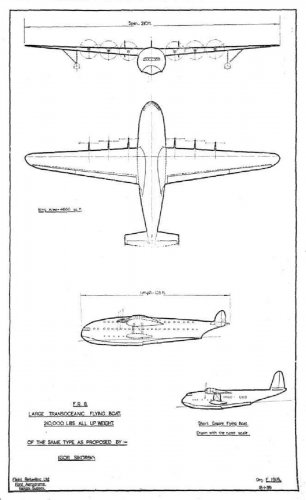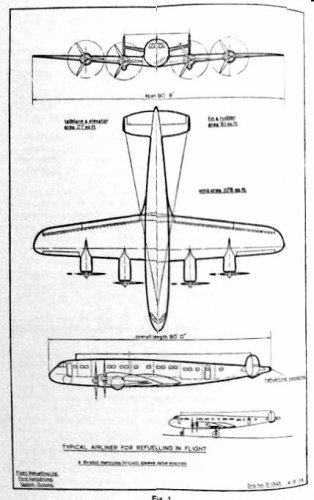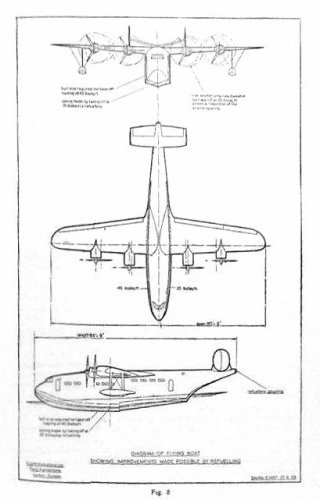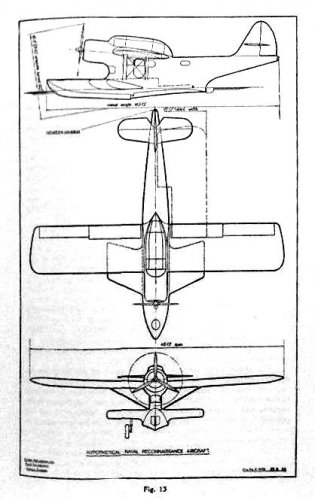- Joined
- 6 September 2006
- Messages
- 4,620
- Reaction score
- 8,609
Recently I picked up 'History of Air-to-Air Refuelling' by Richard M. Tanner MBE published by Pen & Sword, 2006.
It has a complete history of Flight Refuelling Limited's projects and developments. A couple of these have been briefly mentioned elsewhere but I thought a dedicated thread would be useful.
Stirling Receiver
In 1938 the Air Ministry requested studies into flight refuelling for bombers and what effects there would be on performance and payload. In April 1939 a study was drawn up for a reciever conversion of the Short Stirling. Basically the changes were a reception coupling beneath the rear turret, the fuel line then being carried upwards inside the fuselage along the centreline of the roof heading to the inner collector boxes. An hydraulic pump on the starboard outer engine would drive a winch mounted just ahead of the tailplane inside the fuselage. Above this was the operators station. Although the study showed benefits no physical conversion or trials ever took place.
DH.91 Albatross Tanker
A further study was made into converting the DH.91 into a tanker. 1,232 Imp Gallons of fuel were carried in four tanks mounted in the cabin admidships which were interconnected. Ahead of the tanks on the centreline was the hose drum and ahead of that was the hose drum winch which was manually operated with a hose guide beneath it. In the rear fuselage was the contact reel and line-throwing gun firing out of a slot to port. The date on the plans for the Stirling and Albatross projects is 15/5/1939. Eventually this technology resulted in the B-17 receiver and B-24 tanker tested in the USA from April 1943. Plans to build a fleet of these faltered due to the length of time needed for conversions and crew training and the eventual appearance of the B-29.
Lancaster Tanker
At the end of 1943 plans were drawn up for a force to bomb Japan from bases in Burma and in early 1944 it was planned to use the Lancaster as recievers and tankers. The looped system was again used and modified S.30 Empire receiver gear would be used, presumably very similar to the Strirling prokect of 1939.
Three tanker proposals were drawn up for the Lancaster during January 1944. The first proposal had the hose drum and winch fitted at the forward end of the bomb bay, fuel being supplied from No.1 port and starboard wing tanks and two 640 Imp Gallon tanks fitted in the bomb bay. The line throwing gun was mounted in the rear fuselage beneath the dorsal turret on the port side. The contact cable ran externally from the gun to the winch in the forward part of the bomb bay. The second proposal moved the contact gun to the roof of the forward section of the bomb bay which made things much simpler. The third proposal was revolutionary in that the hose drum was mounted at the aft end of the bomb bay along with the contact winch and gun and the tanks were moved forward. It was the first time Flight Refuelling had put the hose drum at the rear of the aircraft. The third proposal was accepted and fifty sets of tanker and receiver equipment ordered for the Tiger Force. By Novmber 1944 the prototype tanker and receiver had flown but by then the war had moved on and nearer land bases to Japan were available.
It has a complete history of Flight Refuelling Limited's projects and developments. A couple of these have been briefly mentioned elsewhere but I thought a dedicated thread would be useful.
Stirling Receiver
In 1938 the Air Ministry requested studies into flight refuelling for bombers and what effects there would be on performance and payload. In April 1939 a study was drawn up for a reciever conversion of the Short Stirling. Basically the changes were a reception coupling beneath the rear turret, the fuel line then being carried upwards inside the fuselage along the centreline of the roof heading to the inner collector boxes. An hydraulic pump on the starboard outer engine would drive a winch mounted just ahead of the tailplane inside the fuselage. Above this was the operators station. Although the study showed benefits no physical conversion or trials ever took place.
DH.91 Albatross Tanker
A further study was made into converting the DH.91 into a tanker. 1,232 Imp Gallons of fuel were carried in four tanks mounted in the cabin admidships which were interconnected. Ahead of the tanks on the centreline was the hose drum and ahead of that was the hose drum winch which was manually operated with a hose guide beneath it. In the rear fuselage was the contact reel and line-throwing gun firing out of a slot to port. The date on the plans for the Stirling and Albatross projects is 15/5/1939. Eventually this technology resulted in the B-17 receiver and B-24 tanker tested in the USA from April 1943. Plans to build a fleet of these faltered due to the length of time needed for conversions and crew training and the eventual appearance of the B-29.
Lancaster Tanker
At the end of 1943 plans were drawn up for a force to bomb Japan from bases in Burma and in early 1944 it was planned to use the Lancaster as recievers and tankers. The looped system was again used and modified S.30 Empire receiver gear would be used, presumably very similar to the Strirling prokect of 1939.
Three tanker proposals were drawn up for the Lancaster during January 1944. The first proposal had the hose drum and winch fitted at the forward end of the bomb bay, fuel being supplied from No.1 port and starboard wing tanks and two 640 Imp Gallon tanks fitted in the bomb bay. The line throwing gun was mounted in the rear fuselage beneath the dorsal turret on the port side. The contact cable ran externally from the gun to the winch in the forward part of the bomb bay. The second proposal moved the contact gun to the roof of the forward section of the bomb bay which made things much simpler. The third proposal was revolutionary in that the hose drum was mounted at the aft end of the bomb bay along with the contact winch and gun and the tanks were moved forward. It was the first time Flight Refuelling had put the hose drum at the rear of the aircraft. The third proposal was accepted and fifty sets of tanker and receiver equipment ordered for the Tiger Force. By Novmber 1944 the prototype tanker and receiver had flown but by then the war had moved on and nearer land bases to Japan were available.




